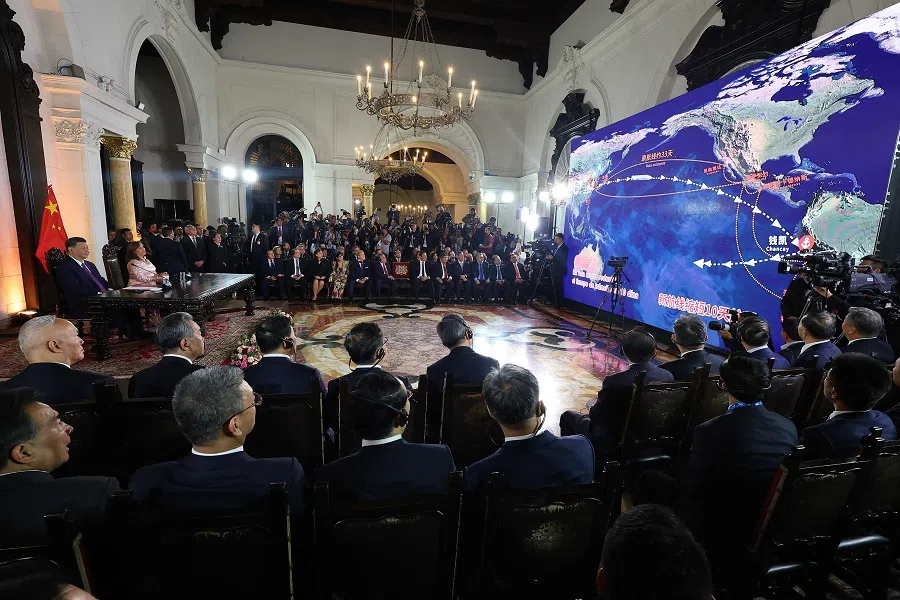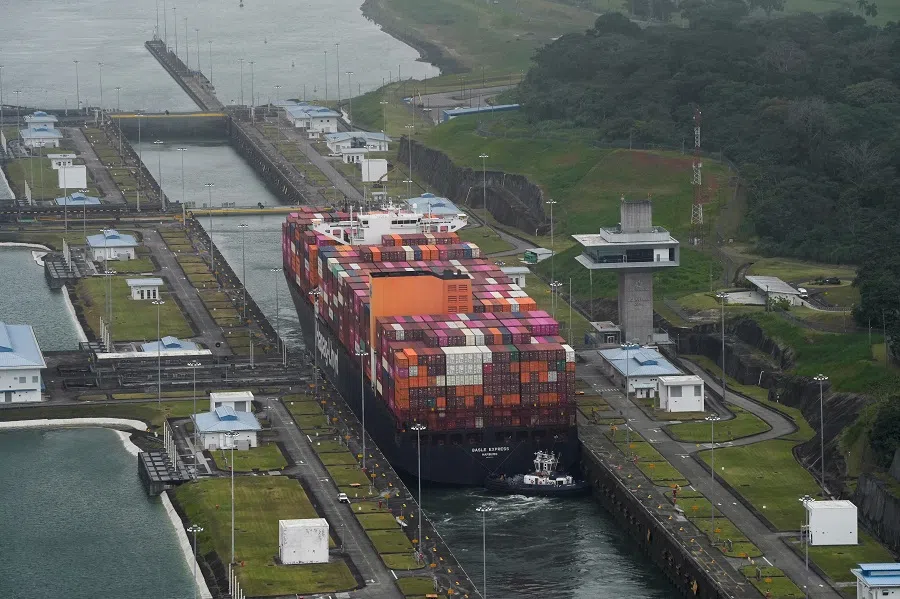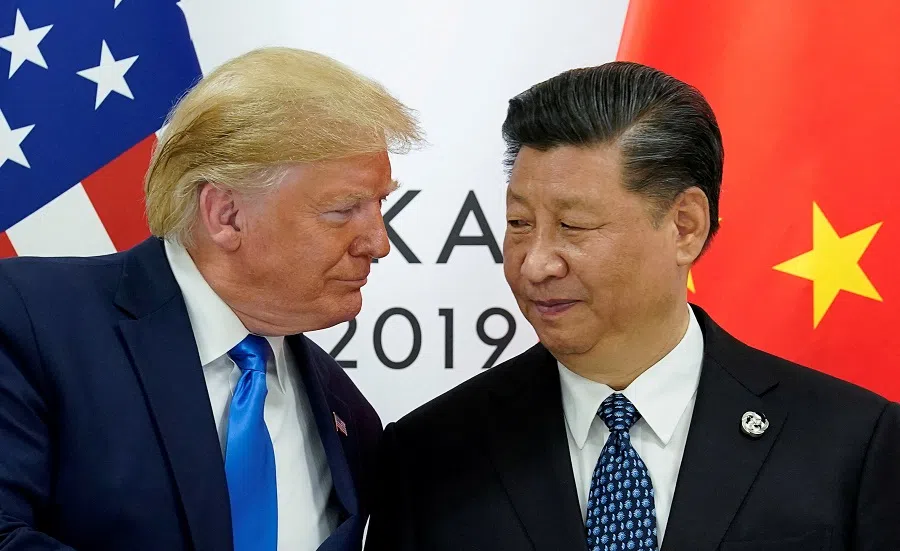Is Peru’s Chancay Port Trump’s next target?
Now that Trump has successfully pressured Panama into withdrawing from China’s Belt and Road Initiative, what will his next target be? According to several experts, he might be honing in on Peru’s Chancay Port. Lianhe Zaobao correspondent Sim Tze Wei tells us more.

Panama has announced its withdrawal from China’s Belt and Road Initiative (BRI), following pressure from the Trump administration. Experts interviewed suggest that Trump’s next target against China could be Peru’s Chancay Port.
The whole process took less than three weeks, starting from Trump’s inauguration speech — where he expressed strong dissatisfaction with China’s growing influence in Panama — to US Secretary of State Marco Rubio’s visit to Panama, and finally to Panamanian President Mulino’s announcement of the country’s withdrawal from the BRI. Immediately after taking office, Trump took a tough stance on Panama, making it clear that he prioritises security in the US’s “backyard”.
Chancay Port an economic threat to the US
Zhu Feng, dean of the School of International Studies at Nanjing University, said in an interview with Lianhe Zaobao that the Panama Canal issue reflects Trump’s intent to further curb China’s BRI in Latin America. He asserted that “there will definitely be further action” and predicted that Peru’s Chancay Port could be the next target of US pressure on China.
Chancay Port is located about 80 kilometres north of Peru’s capital, Lima. It was constructed with a US$1.3 billion investment from China’s state-owned shipping giant COSCO Shipping, which holds a 60% stake and exclusive operating rights. The port is considered a flagship BRI project in South America.
Chinese President Xi Jinping inaugurated Chancay Port last November while in Peru for the Asia-Pacific Economic Cooperation (APEC) Leaders’ Informal Meeting.
Zhu Feng analyses Trump’s policy as framing economic issues through a security perspective and security issues through self-interest.

According to Guatemalan media analysis, Chancay Port’s ability to accommodate large vessels and its modern loading and unloading facilities means that large cargo ships from Asia no longer need to first dock at US or Mexican ports before transferring goods onto smaller vessels for distribution to Central and South America. This could impact the international trade and shipping industries of the US, Mexico and Central American countries.
Security and geopolitical concerns
Zhu Feng noted that the Trump administration views China’s global investment in commercial infrastructure as a means of expanding its influence, which not only weakens US traditional control over certain regions but also encroaches on American business interests. As a result, the US frames economic issues as security threats and labels China’s economic and infrastructure investments in Latin America as geopolitical expansion.
Zhu Feng analyses Trump’s policy as framing economic issues through a security perspective and security issues through self-interest. He argues that, under the “America First” agenda, the US must ultimately profit. Zhu suggests this approach could shape Trump’s China policy, ushering in a new phase of US-China strategic competition.
The US military circle has long been concerned that China might establish a military presence in the western hemisphere by leveraging Chancay Port. After Trump’s election, a former national security official from his team advocated for the imposition of a 60% tariff on any goods entering the US from Chancay Port.
... even if the US were to impose a 60% tariff, it would have no impact because all goods leaving Chancay Port are shipped to Asia and China, not the US. — Professor Carlos Aquino, Director, Center for Asian Studies, San Marcos National University.
What does Trump really want to achieve in Latin America?
Carlos Aquino, director of the Center for Asian Studies and professor of international economics at the San Marcos National University in Peru, dismissed claims about Chancay Port having military purposes as “nonsense”. He explained that even if the US were to impose a 60% tariff, it would have no impact because all goods leaving Chancay Port are shipped to Asia and China, not the US.

Aquino stated that in terms of trade and investment, the China-Peru relationship is already more significant than the US-Peru relationship, with nearly 34% of Peru’s exports going to China last year compared to only around 13% to the US. However, in terms of aid, military relations and political affinity, the US-Peru relationship remains more important than the China-Peru relationship.
Aquino observed that if the US were to pressure Peru or other Latin American countries to withdraw from BRI or distance themselves from China, the US would need to provide alternatives to finance the construction of infrastructure as well as markets for regional goods in Latin American countries. However, it seems the US does not have enough capacity to replace China in this regard.
Aquino concluded that Trump’s intimidation of Latin American countries is aimed at negotiating better terms for the US to try to curb what they see as China’s growing influence in the region.
Latin American countries will soon adopt 5G technology. Aquino assessed that technology will be another battleground for China and the US in Latin America, with the US likely doing everything possible to prevent China — particularly Huawei — from becoming the provider of 5G technology. During Trump’s first term, then Secretary of State Mike Pompeo visited four South American countries in April 2019 and advised them not to adopt Huawei’s 5G technology.
Several US media outlets have argued that the US has long neglected Latin America since the September 11 terrorist attacks in 2001, thus creating an opening for China.
China has more cards to play, but does not want to overreact to the point where it provokes Trump to retaliate even further. — Assistant Professor Dylan Loh, Public Policy and Global Affairs Division, NTU

Trump visited Latin America only once during his first term. Ironically, despite his preoccupation with the control of the Panama Canal, the Central American country cut ties with Taiwan during that same period, embracing Beijing.
How will China react?
After Panama announced its withdrawal from the BRI, the Chinese foreign ministry lodged solemn representations, urging Panama to steer clear of external interference and “make the right decision”. In response to the US imposing 10% tariffs on Chinese goods, China retaliated with tariffs of 10% to 15% on energy products, machinery, and vehicles imported from the US, reopened anti-monopoly probes into Google and Nvidia, and imposed export controls on rare metals.
Dylan Loh, an assistant professor at the Public Policy and Global Affairs division of Nanyang Technological University (NTU), described that China’s response so far has been “quite measured and very proportionate”. He said that this demonstrates that China has been preparing for the changing landscape with Trump’s return to the White House, and understands Trump’s strategies and tactics.
He assessed that China has more cards to play, but does not want to overreact to the point where it provokes Trump to retaliate even further. He also thinks that the level of tariffs imposed by both sides on each other remains within a manageable range. He speculated that both Trump and Xi want to speak to each other, but neither wants to be seen as the one making the move.
China should continue to maintain a low profile and avoid confrontation or conflict with the US. Regarding competition in Latin America, he said that even if China were to step back, it is not guaranteed that the US will be able to replace China in infrastructure projects like ports. — Professor Zhu Feng, Dean, School of International Studies, Nanjing University

Meanwhile, Zhu feels that Trump’s China policy of “securitising economics while commercialising security” is more complex than the China-US trade war and has also intensified China-US competition. However, Trump’s businessman nature leaves room for negotiation and manoeuvring for both sides.
Zhu thinks that China should continue to maintain a low profile and avoid confrontation or conflict with the US. Regarding competition in Latin America, he said that even if China were to step back, it is not guaranteed that the US will be able to replace China in infrastructure projects like ports. “The key question remains: how will South American countries choose?” he said.
This article was first published in Lianhe Zaobao as “特朗普下个涉华目标或是秘鲁钱凯港”.





